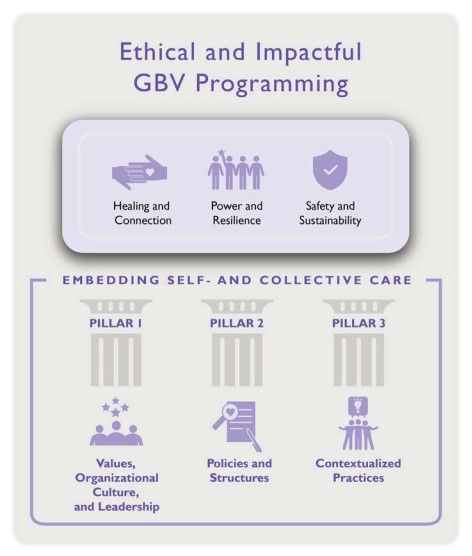Embedding Self- and Collective Care in Organizations Addressing GBV
13.04.2022
ASIV

The goal of CARE-GBV is to strengthen USAID’s collective response to gender-based violence (GBV) in development programming globally. This latest in a series of how-to-notes produced in cooperation with our partners, Making Cents International, sheds light on self and collective care mechanisms that need to be embeded in both GBV work and programming to help prevent vicarious trauma for front-line workers, as well as reflect the responsibility for organizations to do no harm and proactively mitigate risks to psychological well-being and physical safety.
Individuals working on GBV may experience highly stressful situations, including witnessing incidents of violence and their devastating consequences. For staff and activists from marginalized groups, structural inequalities such as stigma and discrimination in their own lives may intersect with and exacerbate these challenges. Moreover, many come to this work as survivors themselves. Trauma symptoms, poor mental health, and burnout are far too common in the GBV field. Feminist and other social justice movements have long recognized the importance of care and healing to sustain their work. The need to embed self-care and collective care within organizations addressing GBV is clear — both as an ethical imperative and a core component of quality programming. The COVID-19 pandemic has caused a surge in GBV globally, and it has intensified gendered and other social inequalities. These conditions mean that there is a new urgency to prioritize such practices.
This how-to note aims to support USAID and implementing partners in deepening their understanding of self- and collective care. It describes three pillars for systematically embedding self- and collective care at different organizational levels, reflects on the roles funders can play to create an enabling environment for incorporating self- and collective care in GBV work, and concludes with practical suggestions to support staff in putting these ideas and strategies into action.